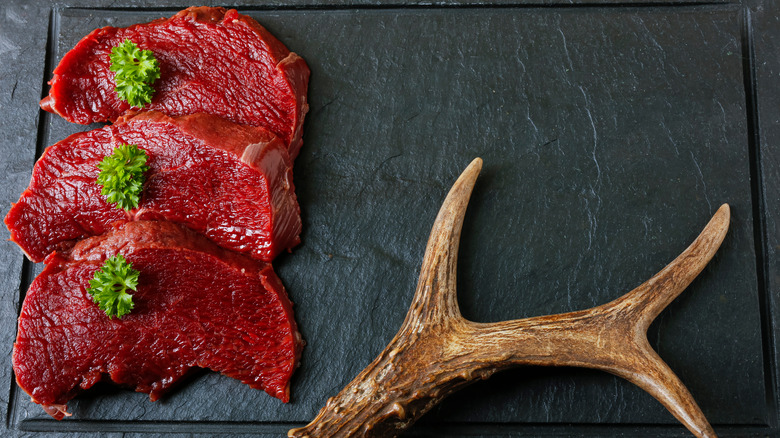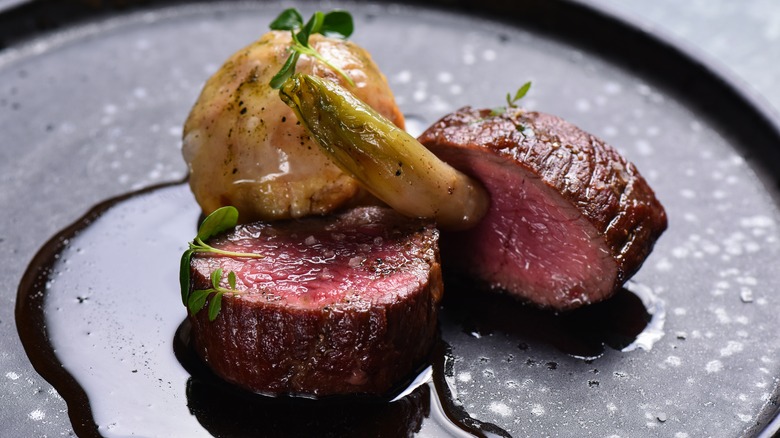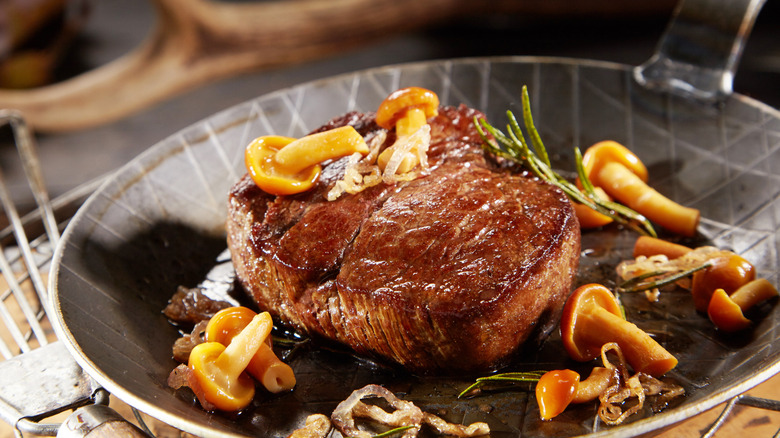Backstrap Meat Is Like The Filet Mignon Of Venison
Anyone seeking tender and flavorful meat that is organic and free-range may need to venture beyond the grocery store. In fact, they might even need to befriend a hunter. Venison is an incredibly lean and nutrient-rich red meat that won't taste gamey at all when seasoned and cooked properly.
One of the most coveted cuts of venison meat is the backstrap. These large muscles develop along the spine of a deer. While they help with stability and movement, they aren't part of the body that is overworked or weight-bearing. That's why these particular muscles become a cut of meat that is so tender.
Backstrap is considered the filet mignon of venison, not because of where it is located on the animal, but because of its tender and flavorful qualities. There isn't a lot of connective tissue or fat, and it is easily and cleanly harvested from the animal. It looks similar in shape to a pork tenderloin, and it can be cooked whole or cut into medallions and prepared like a filet mignon.
How to cook venison backstrap
Since venison backstrap is a tender cut of meat like a filet mignon, it is best enjoyed when cooked rare or medium-rare. The internal temperatures for proper cooking will be the same as with tender cuts of beef. Using an instant-read thermometer inserted into the thickest part of the meat, you should read between 120 and 135 degrees Fahrenheit for a rare to medium-rare level of doneness. Since this cut is so lean, overcooking will lead to loss of moisture and unpleasant, tough, and dried-out steak.
Quick, high-heat cooking methods work best for venison backstrap. This will create a nice char or crust on the outside of the meat while maintaining a tender and juicy interior. It can be prepared whole and sliced before serving, or cut into medallions for an even faster cook time. Either way, be sure to add a generous amount of fat to the pan when preparing backstrap. It is so lean, it will need butter or oil to prevent sticking and to add richness to the dish.
Serving venison backstrap
One of the most exciting aspects of cooking with venison is its ability to stand up to bold flavors. Venison backstrap can be prepared with wet marinades or dry rubs, and you can feel free to get adventurous with spices and flavor combinations. Juniper berries are a common ingredient paired with venison — think of something like arrosto di cervo made with a dry rub of juniper berries.
Venison can be served with strong side dishes as well. Wild rice, roasted root vegetables, or sauteed mushrooms are all excellent choices. The lean nature of the meat also means it tastes great with rich sauces made with butter or heavy cream. Venison also works well with forest berries: Wild blueberries, lingonberries, cranberries, or blackberries are all often incorporated into sauces or side dishes with venison, such as venison with date labneh and blackberries.
To accompany your meal, both wine and beer are viable beverage options as the meat can hold up to bold pairings. Big red wines with a bit of smoke like a Syrah or pinot noir are delicious choices. Beer drinkers will enjoy a strong porter or stout with their rich venison backstrap.



